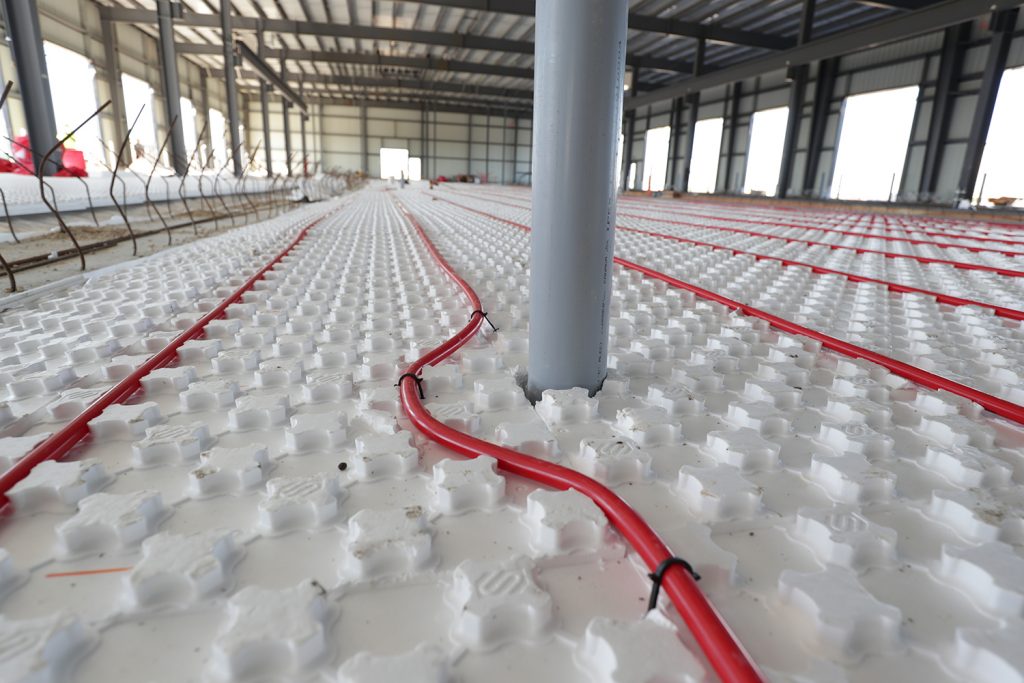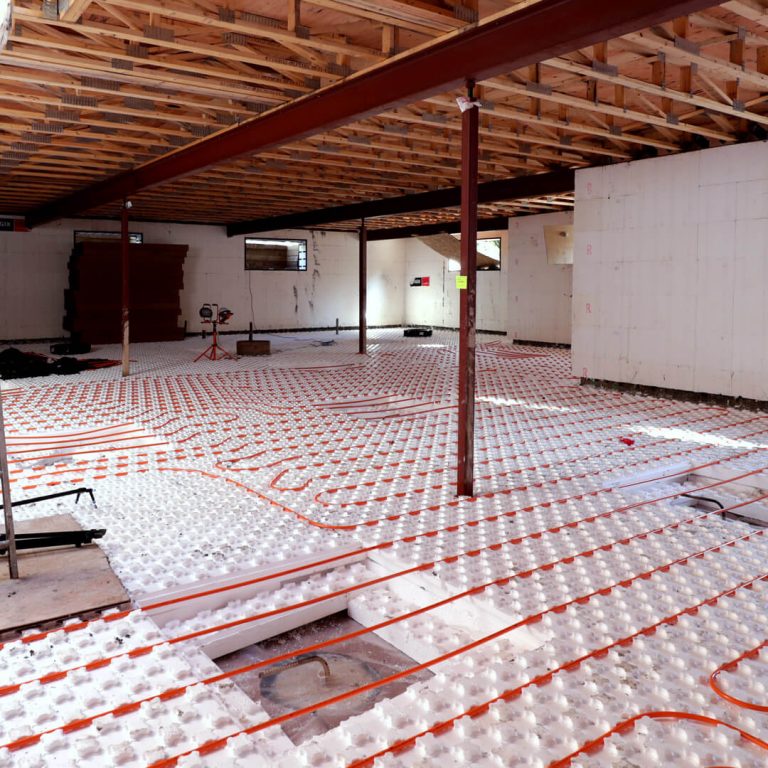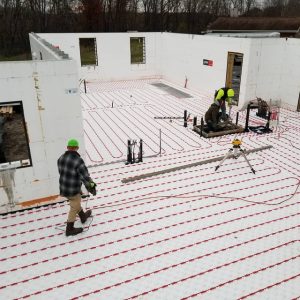People have used radiant heat flooring for millennia to keep their buildings warm. But did you know that it’s still the most efficient way of heating and that installing it in your building can be quick and straightforward?
This post will discuss the basics of hydronic radiant floor heating and offer a few quick tips for sizing and installation.
How Radiant Floor Heating Works
There are 2 types of radiant floor heating: electric and hydronic. The former uses wires, cables, or mats that heat up beneath the surface of a floor once the system is turned on. The latter circulates hot water through a network of pipes embedded in the floor. Hydronic systems get their water supply from a boiler; this can be a dedicated unit that only feeds hot water to the heating system, or a combi unit that also supplies hot water to your taps

Which is Better: Hydronic or Electric Radiant Heat?
Both electric and hydronic systems can be used in concrete slabs or wood-framed floor assemblies. Both are vastly better for your indoor air quality and wellbeing than forced-air systems, as they don’t circulate air (along with dust, pollutants, and allergens) around the house.
That said, hydronic systems have some distinct advantages over their electric peers. For one, hot water retains its high temperatures far longer than electric wires or cables, so you’ll get heat beneath your feet even when the boiler isn’t running. Secondly, running a gas-fired boiler to heat up water is typically cheaper than using electricity to produce heat.
Things to Keep In Mind When Installing Hydronic Radiant Heat Flooring
Ensure Proper Heat Distribution
A key feature — and advantage — of radiant systems is that they distribute heat evenly. Unlike forced-air systems, which blow hot air into a space only to see it quickly rise to the ceiling, radiant floor heaters slowly emit heat from the lowest point of a room. This way, heat slowly rises and warms up the bottom portion of space, and its dwellers.
To amplify heat and distribute it evenly, radiant floor systems require mass. That’s why concrete floors are such a stellar medium for this type of heating system. The concrete can be polished, or have any type of veneer you like as long as it’s not insulative. What’s important is that you don’t let heat escape downward — that’s why you should always install the hot water tubing over a sufficient layer of insulation. Products like Heat-Sheet® work best in this application since their nodules also allow for quick and straightforward installation of the tubing.
Get a Professional to Size Your System
Like with any heating or cooling equipment, you need your hydronic radiant flooring system to be energy-efficient. That’s why proper sizing is essential — incorrectly sized systems can produce too much or too little heat, causing you to consume more energy to achieve the desired indoor climate. A skilled professional can determine the optimal system size by factoring in projected heating loads; these are based on the size of your home and your heating habits.

Don't miss a thing!
Subscribe for exclusive content, insider industry news and limited edition webcasts.
Roughing In Hydronic Piping Is a Good Idea — Even If You Don’t Want the Full System Now
Whether you’re building a new home or an addition, you should consider roughing in hydronic piping even if you don’t need radiant heat flooring now. The costs of a hydronic heating “rough in” that includes Heat-Sheet panels and PEX piping are minimal, but could result in massive ROI if and when you decide to sell your home. All you have to do is connect with a dealer, install the Heat-Sheet® panels and lay the pex piping before you pour your concrete, and leave the rest for later — there’s no need to get a boiler or connect everything right away.

Keep in mind that if you do rough in PEX piping, it’s always prudent to have a professional determine the pipe spacing. And it probably makes sense to call the same installer if you can to hook your system up to a boiler whenever you decide to do so. You should also take the time to sketch or take photos of the PEX piping configuration, as this information will also be useful when you go to make the system live.
Wrapping It Up
Hydronic radiant flooring systems have been around for millennia, and they still present the most efficient way of keeping our buildings warm. If you’re thinking about getting one for a new home or an addition, keep in mind these brief points:
- Use mass, such as a concrete slab, to amplify the heat and distribute it evenly
- Make sure the heat doesn’t escape downward by providing insulation beneath the piping — Heat-Sheet works great for this purpose and makes installation a breeze
- Get a professional to size and design your system.






